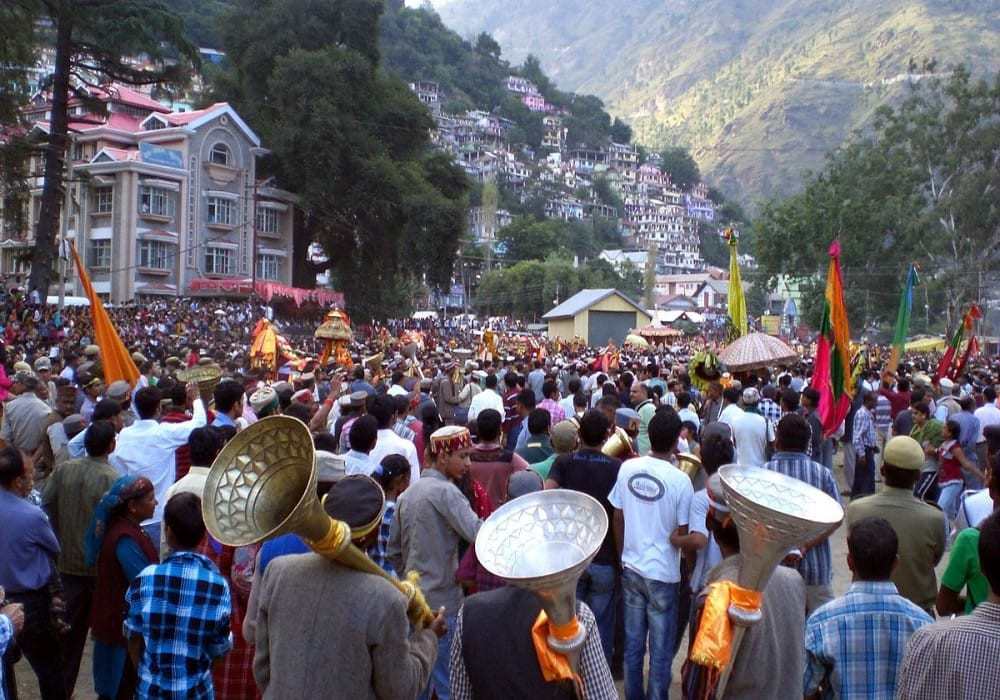
Last Updated At: 04-Feb-2025
Famous Shiva Temples To Visit In South India In 2025
Ready for an adventure where peace and stories from long ago fill the air? Explore the famous Shiva temples in South India to find the history, peace and beautiful architecture.
Visit the old and beautiful Mallikarjuna Swamy Temple, best when the weather is cool from October to March. Walk through the Ramanathaswamy Temple in Rameswaram, where the air feels special, especially during the big festival of Maha Shivratri on 26 February, 2025.
See the big and wonderful Brihadeswarar Temple in Thanjavur, shining under the sun, and listen to the sea's whispers at the Shore Temple in Mahabalipuram, lovely in the cool winter.
Guess what? The oldest Shiva temple, Uthirakosamangai, is in Tamil Nadu and has been standing for 3000 years! It's a big place, full of quiet and beauty.
So say "Om Namah Shivaya" and let your heart feel light. Dive into the quiet happiness and old stories of these famous Shiva temples in South India. Are you ready to start this peaceful journey? Let's go!
Date and Time of Celebrating Maha Shivratri
According to the Hindu calendar, the 14th day (Chaturdashi) of the dark fortnight in the month of Phalguna begins on the night of March 8th at 9:47 PM and ends on the next day, March 9th, at 6:17 PM. Maha Shivratri, a day dedicated to worshipping Lord Shiva and Goddess Parvati, is particularly special for performing Rudrabhishek and prayers. Observing a fast and engaging in worship on this day can lead to happiness and prosperity. Therefore, the Maha Shivratri fast and the best time for Rudrabhishek in 2025 will be observed on Friday, March 8th. This is a significant time for prayers to Lord Shiva and Goddess Parvati, promising a day of divine blessings and spiritual upliftment.
List Of 15 Famous Shiva Temples To Visit In South India
Why should you visit these Shiva temples in South India? Each tells a unique story of devotion and artistry, offering a peaceful escape into spirituality and history.
- Mallikarjuna Swamy Temple: Peace Among High Mountains
- Ramanathaswamy Temple: Old Traditions By The Sea
- Brihadeeswarar Temple: Big Designs, Strong Faith
- Shore Temple: Prayers Next To The Sea
- Meenakshi Sundareswarar Temple: Bright Mix Of Culture And Gods
- Srikalahasteeswara Temple: Wind And Water Meet Belief
- Annamalaiyar Temple: Quiet At Sacred Hills' Base
- Thillai Nataraja Temple: Dance Of The Universe
- Vadakkunnathan Temple: Old Rituals, Quiet Place
- Mahabaleshwar Temple: Forever Calm And Blessed
- Jambukeswarar Temple: Holy Water, Calm Prayers
- Ettumanoor Mahadeva Temple: Bright Faith, Old Beauty
- Murudeshwar Shiva Temple: Big God By The Sea
- Gangaikonda Cholapuram Temple: Kings' Faith Meets Worship
- Uma Maheswara Temple: Nature Hugs Holy Union
1. Mallikarjuna Swamy Temple: Peace Among High Mountains
This is one of the famous Shiva temples in Karnataka, located in the serene town of Srisailam. The temple is renowned for its beautiful carvings and sacred atmosphere, attracting thousands of pilgrims annually. It's part of the 12 Jyotirlingas, making it a must-visit for those seeking spiritual enlightenment. The best time to visit is during the cooler months from October to March when the weather is pleasant for exploring the serene surroundings and delving into spiritual practices.
- Famous For: One of the 12 Jyotirlingas.
- Aarti Time: Morning at 5:30 AM, Evening at 7:30 PM.
- Visiting Time: 6:30 AM - 3:30 PM, 6:00 PM - 9:00 PM.
- Special Festivals: Maha Shivratri, Ugadi.
2. Ramanathaswamy Temple: Old Traditions By The Sea
Located on the serene island of Rameswaram in Tamil Nadu, this temple is a part of the Char Dham pilgrimage. It's famous for its long ornate corridors and sacred water tanks. The best time to visit Shiva temples in Tamil Nadu, including this divine abode, is between October and April, when the climate is welcoming, and the temple rituals are performed with grandeur, providing a unique spiritual experience.
- Famous For: Longest temple corridors in the world.
- Aarti Time: Morning at 5:00 AM, Evening at 7:00 PM.
- Visiting Time: 5:00 AM - 1:00 PM, 3:00 PM - 9:00 PM.
- Special Festivals: Maha Shivratri, Ramanathaswamy Brahmotsavam.
3. Brihadeeswarar Temple: Big Designs, Strong Faith
This UNESCO World Heritage site in Thanjavur, Tamil Nadu, is a remarkable example of South Indian architecture in Shiva temples. The temple is known for its massive tower and intricate sculptures. The temple's historical significance lies in its representation of the power and cultural achievements of the Chola dynasty. Visiting this temple offers insight into the architectural and spiritual heritage of South India.
- Famous For: UNESCO World Heritage Site.
- Aarti Time: Morning at 6:00 AM, Evening at 8:00 PM.
- Visiting Time: 6:00 AM - 12:30 PM, 4:00 PM - 8:30 PM.
- Special Festivals: Maha Shivratri, Thanjavur Festival.
4. Shore Temple: Prayers Next To The Sea
In Mahabalipuram, Tamil Nadu, the Shore Temple majestically overlooks the Bay of Bengal. It's known for its unique structure and has been a landmark for navigators. The temple is a fine example of early South Indian architecture with rock-cut structures and detailed carvings. It's especially beautiful during sunrise and sunset, making it a picturesque site for devotees and tourists.
- Famous For: Rock-cut architecture overlooking the sea.
- Aarti Time: Morning at 6:00 AM, Evening at 7:00 PM.
- Visiting Time: 6:00 AM - 6:00 PM.
- Special Festivals: Mahashivratri, Pongal.
5. Meenakshi Sundareswarar Temple: Bright Mix Of Culture And Gods
This vibrant temple in Madurai, Tamil Nadu, is famous for its detailed mythological carvings and towering gateways. The temple is dedicated to Goddess Parvati (Meenakshi) and Lord Shiva (Sundareswarar) and is an architectural marvel showcasing the Dravidian style. The local festivals near Shiva temples in Kerala are vibrant and colourful. Still, in Madurai, the annual Meenakshi Tirukalyanam festival, celebrating the divine marriage of the deities, is a sight to behold, drawing visitors from all over.
- Famous For: Architectural grandeur and vibrant sculptures.
- Aarti Time: Morning at 5:00 AM, Evening at 9:30 PM.
- Visiting Time: 5:00 AM - 12:30 PM, 4:00 PM - 10:00 PM.
- Special Festivals: Meenakshi Tirukalyanam, Navaratri.
6. Srikalahasteeswara Temple: Wind And Water Meet Belief
This temple is located in Srikalahasti, Andhra Pradesh, and is famous for its Vayu linga, representing the wind element. The temple is a significant site for those looking to perform Rahu-Ketu pooja for astrological remedies. Guided tours of Shiva temples in Andhra Pradesh, particularly this temple, provide insights into its architecture, history, and religious practices, making it an enriching experience for visitors.
- Famous For: Vayu Linga representing the wind element.
- Aarti Time: Morning at 5:30 AM, Evening at 7:00 PM.
- Visiting Time: 6:00 AM - 9:00 PM.
- Special Festivals: Maha Shivaratri, Rahu Ketu Puja.
7. Annamalaiyar Temple: Quiet At Sacred Hills' Base
Situated in Tiruvannamalai, Tamil Nadu, this temple is renowned for its massive gopurams and the sacred hill, Arunachala. The temple is significant for its connection with the fire element, one of the five natural elements worshipped in Hinduism. The historical significance of Shiva temples in South India is vividly displayed here, especially during the Karthigai Deepam festival when a huge fire beacon is lit atop the hill, symbolising Shiva's divine light.
- Famous For: Fire element among the five Shiva temples.
- Aarti Time: Morning at 5:00 AM, Evening at 7:30 PM.
- Visiting Time: 5:30 AM - 12:30 PM, 3:30 PM - 9:30 PM.
- Special Festivals: Karthigai Deepam, Shivratri.
8. Thillai Nataraja Temple: Dance Of The Universe
Located in Chidambaram, Tamil Nadu, this temple is unique as it celebrates Lord Shiva as the cosmic dancer Nataraja. It's a profound symbol of the synthesis of arts, religion, and science. The temple architecture embodies the essence of South Indian traditions and cosmic symbolism. This temple is among the top 5 Shiva temples for spiritual seekers, especially those interested in Tamil culture and Shaivism.
- Famous For: Lord Shiva as the cosmic dancer, Nataraja.
- Aarti Time: Morning at 6:00 AM, Evening at 8:00 PM.
- Visiting Time: 6:00 AM - 12:00 PM, 5:00 PM - 9:00 PM.
- Special Festivals: Natyanjali Festival, Aani Thirumanjanam.
9. Vadakkunnathan Temple: Old Rituals, Quiet Place
This ancient temple in Thrissur, Kerala, is known for its stunning murals and exquisite architecture. It's a classic example of the Kerala style of architecture surrounded by a large stone wall on all sides. The temple is central to the local festivals near Shiva temples in Kerala, particularly the famous Thrissur Pooram, known for its elephant procession and fireworks.
- Famous For: Traditional Kerala architectural style.
- Aarti Time: Morning at 3:00 AM, Evening at 8:30 PM.
- Visiting Time: 4:00 AM - 10:30 AM, 5:00 PM - 8:30 PM.
- Special Festivals: Thrissur Pooram, Maha Shivratri.
Read more : Temples In South India
10. Mahabaleshwar Temple: Forever Calm And Blessed
Located in Gokarna, Karnataka, this temple is known for housing the Atma Linga of Lord Shiva. It's a serene place on the Arabian Sea's coast, offering a tranquil environment for meditation and prayer. The temple has a simplistic design that focuses on the spiritual rather than the architectural aspect, making it a revered site among the famous Shiva temples in Karnataka.
- Famous For: Atmalinga and serene beachside location.
- Aarti Time: Morning at 6:30 AM, Evening at 7:30 PM.
- Visiting Time: 6:00 AM - 8:00 PM.
- Special Festivals: Maha Shivratri, Karthika Pournami.
11. Jambukeswarar Temple: Holy Water, Calm Prayers
This temple, situated in Tiruchirapalli, Tamil Nadu, is famed for representing water, one of the five elements. The temple's sanctum is below ground level, and water constantly flows around the lingam, creating a unique sight. It provides a peaceful retreat for devotees and tourists alike, surrounded by lush greenery and ancient structures, representing a blend of nature and spirituality.
- Famous For: Water element, submerged Shiva lingam.
- Aarti Time: Morning at 5:30 AM, Evening at 8:00 PM.
- Visiting Time: 6:00 AM - 1:00 PM, 3:00 PM - 8:30 PM.
- Special Festivals: Aadi Thapasu, Panguni Uthiram.
12. Ettumanoor Mahadeva Temple: Bright Faith, Old Beauty
This historic temple located in Kerala is known for its artistic carvings and traditional Kerala architecture. The temple is famous for its annual festival, Ezharaponnana, which attracts devotees and tourists. The temple's deep spiritual ambience and local culture make it a significant spot near other Shiva temples in Kerala.
- Famous For: Ancient murals and traditional Kerala architecture.
- Aarti Time: Morning at 4:00 AM, Evening at 8:30 PM.
- Visiting Time: 5:00 AM - 12:00 PM, 5:00 PM - 8:00 PM.
- Special Festivals: Ettumanoor Ezharaponnana, Maha Shivratri.
13. Murudeshwar Shiva Temple: Big God By The Sea
Set on the Kanduka Hill, surrounded by the Arabian Sea, this temple in Karnataka is famous for the world's second-tallest Shiva statue. It's a modern marvel and a spiritual hub, providing panoramic views of the surrounding landscape. The temple's location and architecture are a testament to the innovative spirit of modern devotion, making it a popular destination among the famous Shiva temples in Karnataka.
- Famous For: Second tallest Shiva statue in the world.
- Aarti Time: Morning at 6:30 AM, Evening at 7:30 PM.
- Visiting Time: 6:00 AM - 8:30 PM.
- Special Festivals: Maha Shivratri, Navaratri.
Read More : Places To Visit In Murudeshwar
14. Gangaikonda Cholapuram Temple: Kings' Faith Meets Worship
Built by the Cholas, this temple in Tamil Nadu is a testament to their architectural prowess and spiritual ideology. Although smaller than its counterpart in Thanjavur, the temple is majestic and houses intricate sculptures and designs. Its historical significance reflects the zenith of Chola art and architecture, marking an important era in the historical significance of Shiva temples in South India.
- Famous For: Exemplifying the Chola dynasty's architectural magnificence.
- Aarti Time: Morning at 6:00 AM, Evening at 7:30 PM.
- Visiting Time: 6:00 AM - 12:00 PM, 4:00 PM - 8:00 PM.
- Special Festivals: Maha Shivratri celebrates the grandeur of Chola's legacy.
15. Uma Maheswara Temple: Nature Hugs Holy Union
This temple, situated in Andhra Pradesh, is perched atop a hill offering scenic views of the surrounding valleys. The temple is known for its peaceful ambience and the harmonious relationship between nature and spiritual practice, ideal for those seeking solace and inner peace. The temple's architecture blends natural elements and traditional design, making it a unique example of South Indian architecture in Shiva temples.
- Famous For: Its serene location atop a hill offers breathtaking valley views.
- Aarti Time: Morning at 5:30 AM, Evening at 7:00 PM.
- Visiting Time: 6:00 AM - 12:00 PM, 3:00 PM - 8:00 PM.
- Special Festivals: Shivratri is celebrated with a special enthusiasm amidst nature.
Read more : Places To Visit In South India
These temples are not just stone and mortar; they are the heartbeats of devotion, standing tall as guardians of culture and tradition. Each visit brings you closer to the past's serene whispers, the present's vibrant chants, and the eternal peace that Shiva embodies. They are places where art, history, and spirituality weave together to create a tapestry of unforgettable experiences. Embark on this journey to discover the divine and find yourself.
Start your journey with Adotrip today! Find everything you need, from tips to full trip help, and book your flights, stays, and tours in one spot.
With Adotrip, every place is within reach - everything is pretty close!
Book India Tour Packages
Frequently Asked Questions about Shiva Temples In South India
Q1: What are some iconic Shiva temples in South India worth visiting?
A1: Must-visit Shiva temples in South India include the Mallikarjuna Swamy Temple, Ramanathaswamy Temple, Brihadeeswarar Temple, and Meenakshi Sundareswarara Temple. Each offers unique spiritual and architectural experiences.
Q2: Is there a recommended pilgrimage route for exploring famous Shiva temples in South India?
A2: While there's no fixed route, a popular journey starts from Rameswaram's Ramanathaswamy Temple, then to Tamil Nadu's Meenakshi Temple, and further includes visits to the Brihadeeswarar and Annamalaiyar Temples, among others.
Q3: Can you provide information on the historical significance of Shiva temples in South India?
A3: Shiva temples in South India are spiritual centres and marvels of ancient architecture and culture. They showcase the Dravidian architectural style, pivotal in preserving and propagating Hinduism, art, and culture for centuries.
Q4: Are specific festivals celebrated at these famous Shiva temples in South India?
A4: Yes, major festivals include Maha Shivratri, which is celebrated with great enthusiasm, and Karthikai Deepam at Annamalaiyar Temple. Each temple has its unique festivals, drawing devotees in large numbers.
Q5: What is the best time of the year to plan a visit to the renowned Shiva temples in South India?
A5: The ideal time to visit these temples is from October to March when the weather is cooler and more comfortable for exploration and participation in spiritual activities.
Q6: When should Rudrabhishek be performed in 2025?
A6: Rudrabhishek is best performed on Maha Shivratri, which in 2025 falls on February 26th. This day is dedicated to worshipping Lord Shiva and Goddess Parvati with special devotion. Those who fast and engage in prayers on this day can receive blessings of happiness and good fortune. Observing Maha Shivratri with Rudrabhishek on this date is considered highly auspicious.
--- Published By Adotrip
Latest Blogs

Long Weekends In India 2025 - List of Holidays

Kazakhstan Travel Guide 2025: Affordable Luxury, Visa Free E...

Think Ayodhya is Just Temples? Discover Its Hidden Artistic...

Why Azerbaijan is the Best Budget Friendly Alternative to Sw...












 Dubai
Dubai Malaysia
Malaysia USA
USA





